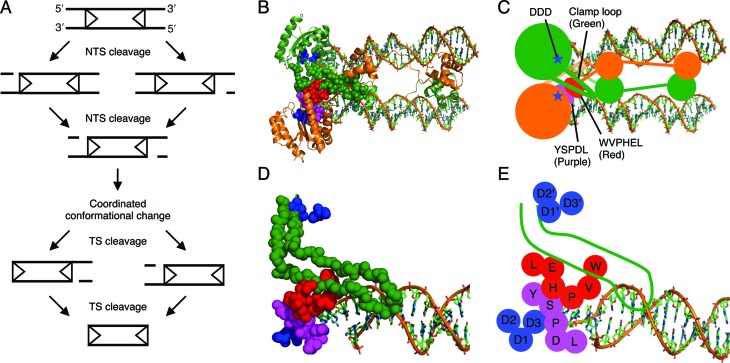Figure 7.
The order of catalytic events during mariner transposition and the structural relationship between conserved sequence motifs in the post-cleavage Mos1 intermediate. (A) Transposon excision is initiated by cleavage of the NTS at the two transposon ends. This is followed by a structural change that is coordinated between the two halves of the transpososome. The transposase then cleaves the TS at the two ends, excising the transposon from the donor sequence. Transposon ends are represented as arrowheads. (B–E) The structural relationship between the clamp loop and the conserved sequence motifs in the crystal structure of the Mos1 post-cleavage transpososome (4). (B, C) The trans architecture of the transposome. DNA is shown as sticks, transposase as ribbons with one subunit in green and the other subunit in orange. The active site (blue) and the structural features making up the interface between transposase subunits are represented as spheres. (D, E) Zoom of the interactions between the clamp loop of one subunit (green) with the conserved sequence motifs of the second subunit: WVPHEL (red), YSPDL (purple) and DDD (blue). The long unstructured loop of one subunit interacts with the conserved WVPHEL motif of the second subunit.

